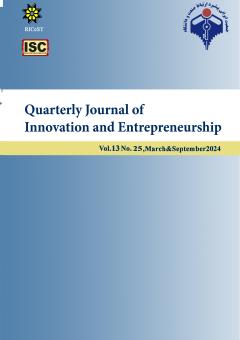Sociological Study of the Relationship Between Media Literacy and Political Socialization Status of Male High School Students in Mahenshan City in 1400
Subject Areas : تخصصی
sayyed atollah sinaee
1
![]() ,
mahnaz jalili
2
*
,
mahnaz jalili
2
*
![]() ,
mohamad shiri
3
,
mohamad shiri
3
![]()
1 - Assistant Professor, Faculty of Social Sciences, Payam Noor University, Tehran, Iran
2 - Assistant Professor, Department of Social Sciences, Payam Noor University. Tehran, Iran
3 - Master of Sociology, Payam Noor University, Parand Branch, Tehran, Iran
Keywords: Media literacy, Socialization, Media Messages,
Abstract :
Socialization, as a process that makes a person familiar with the way of life in his society, is considered important and necessary for every society. Several factors such as media literacy of people are effective in this matter. The purpose of this research is to investigate the relationship between media literacy and the socialization status of high school male students in Mahenshan city in 1400, using Potter's cognitive theory of media literacy. The research method was a survey and the data collection tool was a questionnaire. The statistical population includes male high school students in Mahenshan city in 1400, 150 people were selected as the main sample of the study using a multi-stage cluster random sampling method to check whether there is a relationship between media literacy and the socialization status of high school male high school students in Mahenshan city. has it. The research findings show that the correlation coefficients of understanding the content of media messages with 0.910, conscious selection of media messages with 0.886, critical look at media messages with 0.653, analysis of media messages with 0.770, awareness of goals Hidden with 0.511 and contextual variables with 0.742 have an effect on the sociability of male high school students in Mahenshan city. The results show that there is a direct and significant relationship between the media literacy of the statistical population and the socialization status of male high school students in Mahenshan city
1. ابراهیمزاده، عیسی؛ زندی، بهمن؛ علیپور، احمد؛ زارع، حسین و یزدانی، فریدون. (1393). انواع یادگیری الکترونیکی و شکلهای مختلف تعامل درآن. مجله بین رشته ای یادگیری مجازی در علوم پزشکی, 1(1), 11-22.
2. اسماعیلی، هادی؛ رحمانی، شاهپور؛ کاظمی، احمد و علی احمدی، مصطفی. (1395). ارزیابی وضعیت یادگیری الکترونیکی واحد آموزش مجازی دانشگاه سیستان و بلوچستان، مجله پژوهش های مدیریت عمومی، ۹(۳۴)، ۲۰۳-۲۲۲.
3. اکرم، وحید(1397). بررسی و تحلیل سطوح مختلف سواد رسانه ای، پژوهشنامه، ویژه نامه سواد رسانه ای، مجمع تشخیص مصلحت نظام، پژوهشکده پژوهشها استراتژیك،شماره22.
4. براری، نوری؛ اعلامی، فرنوش؛ رضایی زاده؛ مرتضی و خراسانی، اباصلت. (1398). ارزشیابی از اهداف سطوح عالی یادگیری در محیط های یادگیری الکترونیکی (استانداردها و شاخص ها)،نشریه آموزش و ارزیابی، دوره 12 ، شماره 45.
5. شمس، محمدشهاب، (1387). «فن آوریهای اطلاعات و ارتباطات در عرصه آموزش معلمها» کمیسیون ملی یونسکو.
طاهری، مرتضی(1399). ارائه مدلی بهمنظور کارکرد حرفهای معلم، رساله دکتری، دانشگاه شهید بهشتی، تهران.
6. قاسمی،مریم؛ فردانش، هاشم؛ حاتمی،جواد و احمدی، سلیمان. (1397). سنجش ميزان آمادگي يادگيري الكترونيكي در دانشگاه علوم پزشكي البرز، نشریه راهبردهای آموزش در علوم پزشکی، دوره 11، شماره 4.
7. مهر محمدی، محمود. (1397)، برنامه درسی نظرگاهها، رویکردها و چشماندازها، قدس رضوی، شرکت به نشر، چاپ دوم.
8. Abbasi, E. & Najaflu, P. (2019). Information Literacy in Graduate Students of Agriculture of Tarbiat Modares University, Quarterly of Agricultural Education Administration Research, 34, 89-103.
9. Avval Shahr, Homa Sadeghi& Yazdani ,Shahram& Afshar Leila.(2019). Professional socialization: an analytical definition. Journal of medical ethics and history of medicine, 2019; 12: 17.
10. Awad-Cherit, Isabe(2008). Cultural Diversity in the News Media: A Democratic or a Commercial, Cultural Diversity in the News, Javnost-The public, 16 (4), pp. 55-72.

